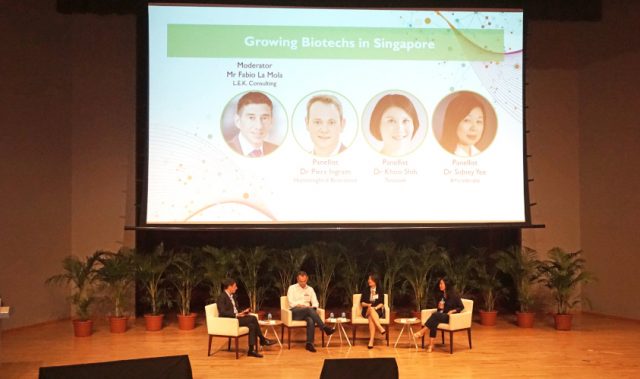
AsianScientist (Nov. 29, 2018) – A research group at Nanyang Technological University, Singapore, has developed a ‘contact lens’ that could provide a painless and efficient alternative to eye injections. They reported their results in Nature Communications.
Currently, eye diseases such as glaucoma and macular degeneration are treated using localized methods such as eye drops and ointments, which are hindered by the eye’s natural defenses—tears and blinking.
While doctors may sometimes prescribe eye injections, such treatments can be painful and carry a risk of infection and eye damage. As a result, some patients are unable to keep up with the prescribed regime for their eye ailments, many of which require long-term management.
In the present study, researchers led by NTU Singapore Professor Chen Peng developed a proof-of-concept patch covered with biodegradable microneedles that allows controlled drug delivery to the eye. Each needle, thinner than a strand of hair, is made of hyaluronic acid—a substance found in the eye—and is shaped like a pyramid for optimal tissue penetration. A modified version of hyaluronic acid is added to form a second layer of the needle, which slows down the rate at which the needle degrades, thereby ensuring prolonged release of the drug.
Testing their invention in mice, the researchers pressed the patch onto the eye surface briefly and gently. They found that the drug-containing microneedles detached and stayed in the cornea, releasing the drug over time as they dissolved. In mice suffering from corneal vascularization, where blood vessels in the cornea obstruct vision, a single application of the patch was 90 percent more effective in alleviating the condition than applying a single eye drop containing ten times the drug content.
The researchers reported that there was no puncture on the cornea after a week, suggesting that the microneedles were strong enough to penetrate the cornea, but not so stiff as to cause damage to it.
“The microneedles are made of a substance found naturally in the body and we have shown in lab tests on mice that they are painless and minimally invasive. If we successfully replicate the same results in human trials, the patch could become a good option for eye diseases such as glaucoma and diabetic retinopathy that require long-term management at home,” said Chen.
Chen added that the team has filed a patent for their invention and is currently working on further improving the eye patch technology. They are also looking to partner clinician scientists to study the feasibility of clinical trials.
The article can be found at: Than et al. (2018) Self-implantable Double-layered Micro-drug-reservoirs for Efficient and Controlled Ocular Drug Delivery.
———
Source: Nanyang Technological University; Photo: Shutterstock.
Disclaimer: This article does not necessarily reflect the views of AsianScientist or its staff.












